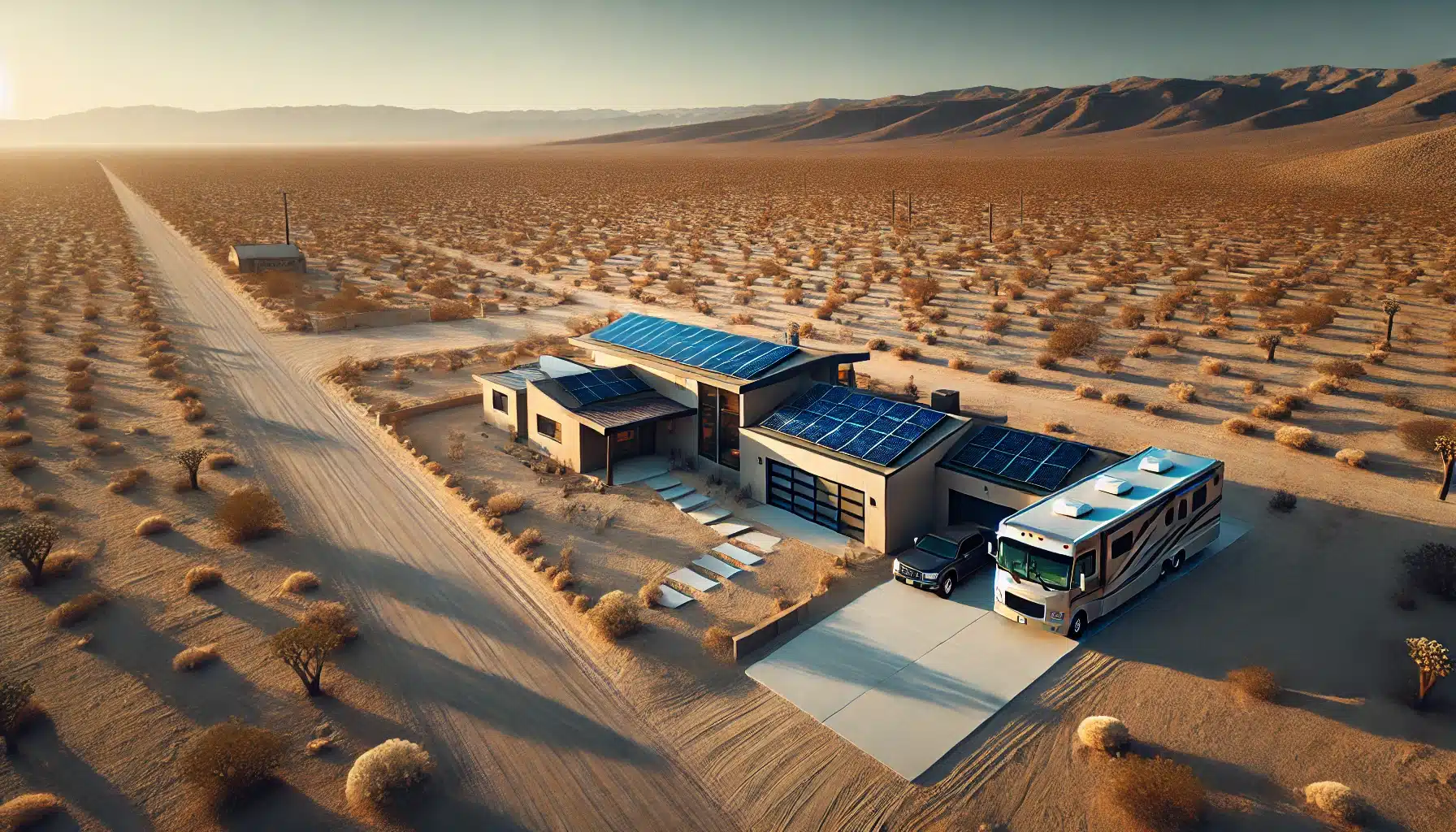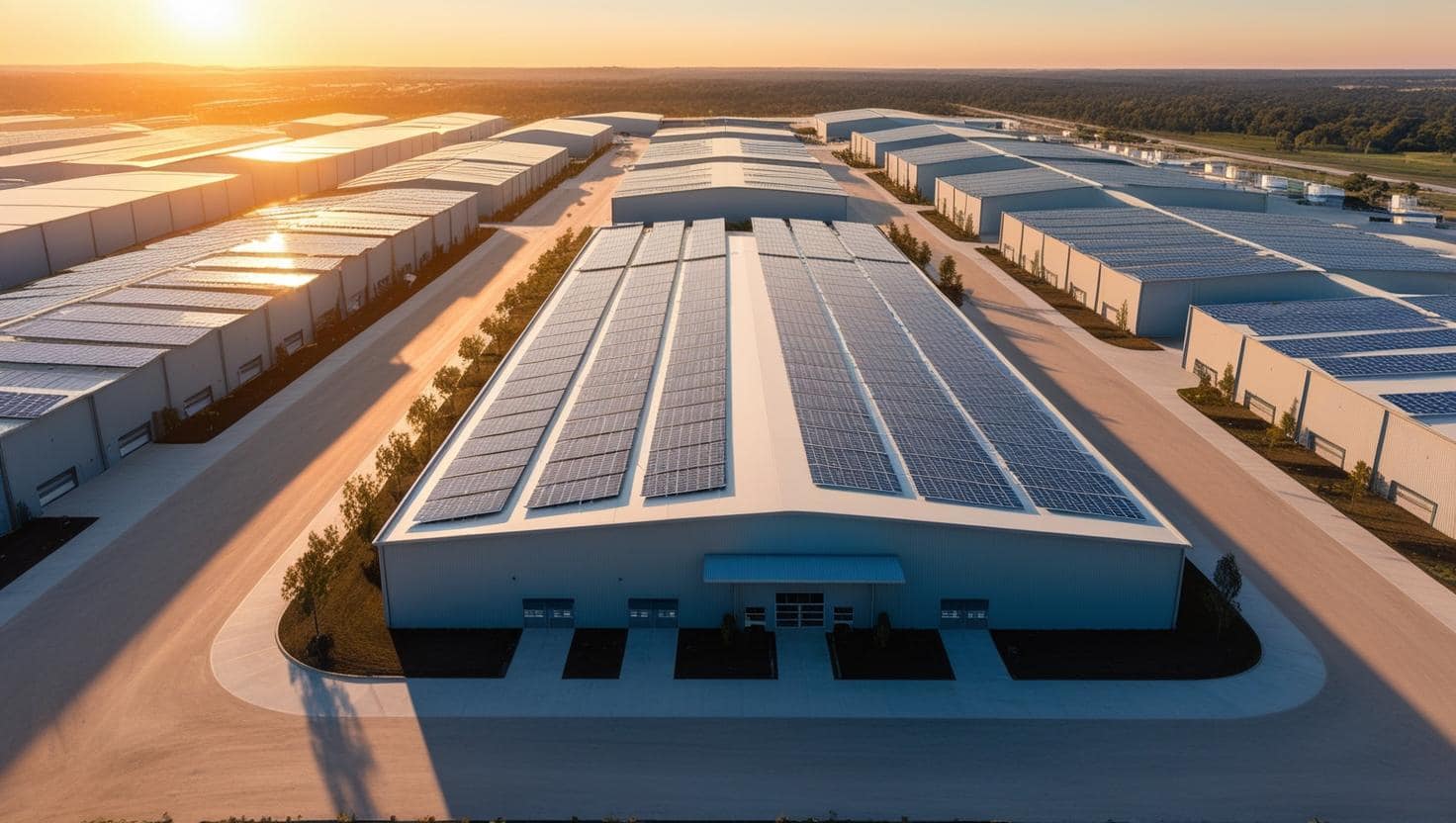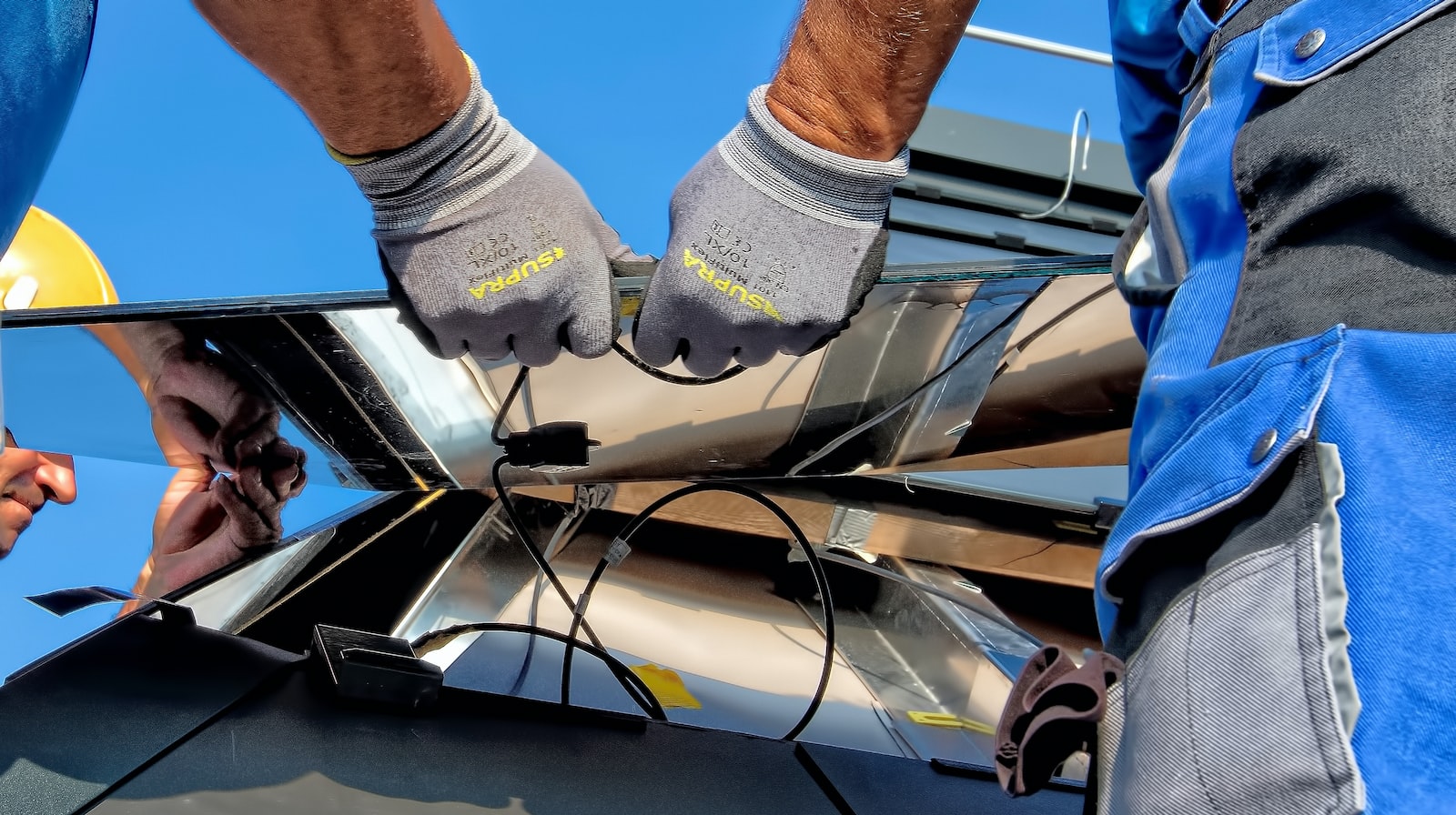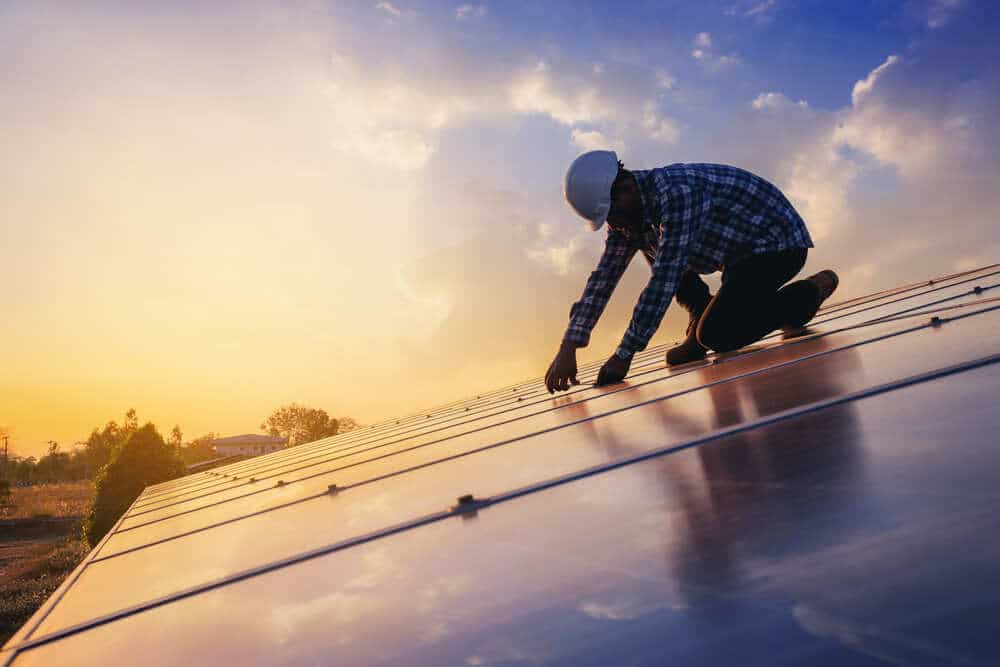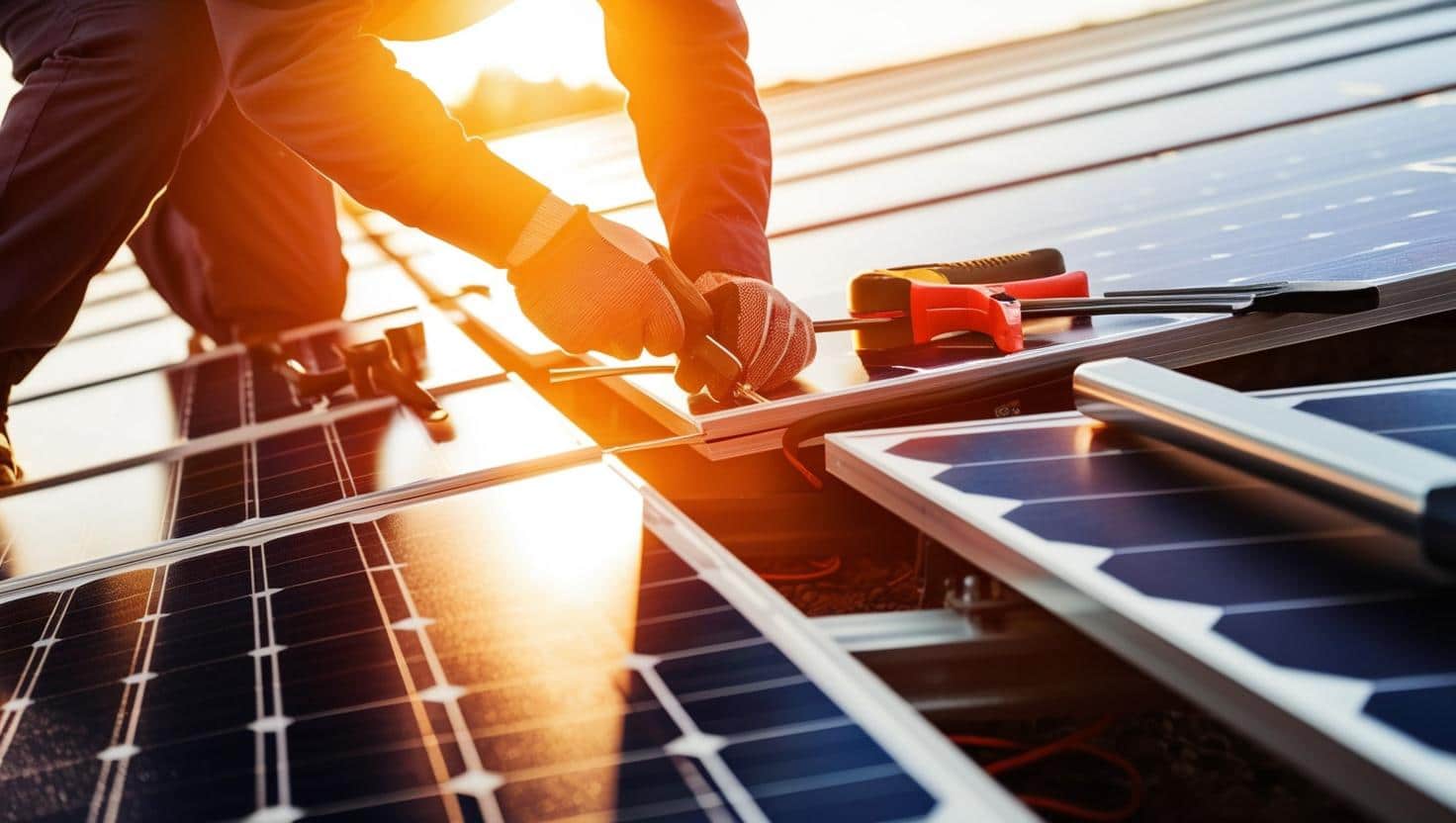Key Takeaways
- Off-grid solar systems consist of key components including solar panels, charge controllers, inverters, and batteries, which collectively ensure efficient energy capture, conversion, storage, and management.
- The benefits of off-grid solar systems include energy independence, significant long-term cost savings, and a positive environmental impact through reduced reliance on fossil fuels.
- Selecting the right off-grid solar system involves assessing energy needs, considering location factors, and effective budget planning to ensure sufficient energy production and reliable performance.
Understanding Off Grid Solar Systems

An off-grid solar energy system is a self-sustaining energy system that operates independently from the utility grid, using the sun as its primary energy source. These systems harness solar energy to provide reliable power in areas without grid access or where the grid is unreliable. The key components of an off-grid solar system typically include solar panels, charge controllers, inverters, and battery banks.
Each component is vital for the system’s efficiency and reliability. Solar panels capture the sun’s energy, charge controllers manage the flow of electricity to prevent overcharging, inverters convert the energy into a usable form, and batteries store the energy for later use. Knowing how these components work is essential for successfully implementing an off-grid solar system.
Solar Panels
Solar panels are the heart of any off-grid solar system. They capture solar energy using high-converting solar cells and are typically mounted on rooftops, poles, or ground mounts depending on the application. Monocrystalline solar panels are the most common type used due to their higher efficiency and cost-effectiveness. For instance, EcoFlow’s solar panels, which use monocrystalline cells, boast a conversion rate of up to 23%.
The number of solar panels required for an off-grid solar system depends on the energy needs of the household and the amount of sunlight available. A typical 60-cell panel can produce between 300 to 375 watts. By arranging solar panels into a solar array, homeowners can maximize energy production and ensure a consistent power supply even during cloudy weather or peak energy demand periods.
Charge Controllers
Charge controllers are vital for ensuring that the batteries in an off-grid solar system are charged correctly and not overcharged, which can prolong their lifespan. These devices regulate the current flowing from the solar panels to the batteries, optimizing the operating voltages between the two.
There are different types of charge controllers, such as PWM and MPPT, with the latter being more efficient and commonly used in modern systems like the Renogy 60A MPPT controller and the EcoFlow Power Hub.
Inverters
Inverters are critical components in an off-grid solar system as they convert DC power from the solar panels and batteries into AC power, which is suitable for household appliances. This conversion is essential because most household devices operate on AC power.
Choosing an inverter that matches the system voltage is key to maintaining overall performance and efficiency.
Solar Batteries
Solar batteries store energy collected from solar panels until it is needed, providing a reliable power source even when sunlight is not available. These batteries are essential for ensuring a continuous power supply, especially during nighttime or cloudy days. Lithium batteries are often favored for off-grid systems due to their long cycle life and maintenance-free nature, while lead-acid batteries require more upkeep and proper ventilation.
When selecting solar batteries, consider factors like battery output power and backup storage capacity for storms or higher energy needs. Properly sizing and utilizing a battery bank enhances the efficiency and reliability of an off-grid solar system, ensuring sufficient electricity to meet your needs.
Components of an Off Grid Solar System
The four major components included in all off-grid solar systems are solar panels, charge controllers, batteries, and inverters. Each of these components works together to capture, convert, store, and distribute solar energy efficiently. For instance, the EcoFlow Power Hub combines an inverter and MPPT charge controllers, enhancing the efficiency of energy conversion and management.
System testing often involves connecting these components systematically to ensure proper calibration and functionality before full operation. Regular troubleshooting during the testing phase helps identify and rectify any issues that could affect system performance.
Understanding each component’s role is essential for setting up a reliable off-grid solar system.
Solar Arrays
Solar arrays are configurations of solar panels designed to maximize energy production and efficiency. These arrays can be mounted using various methods, such as roof mounts, pole mounts, or ground mounts, depending on the application and available space.
Optimizing the arrangement and orientation of solar panels ensures sustainable and renewable energy production year-round.
Battery Banks
Battery banks in an off-grid solar system store excess energy generated during peak sunlight hours for use during cloudy days or at night. Typically, around 12 solar batteries are needed to adequately fulfill energy needs in an off-grid setup. Having sufficient battery storage is essential for ensuring reliability and comfort during power outages, as it allows for continuous energy use without relying on the utility grid. If you’re wondering how many batteries are necessary, it’s important to consider your specific energy requirements.
Properly sizing and utilizing battery banks maximizes the efficiency of an off-grid solar system. Storing excess electricity ensures sufficient power availability even during low sunlight periods.
Backup Generators
Backup generators are essential in off-grid solar systems for providing power during prolonged periods of inadequate sunlight. They serve as a supplementary power source, ensuring continuous energy supply regardless of weather conditions.
Backup generators are essential for maintaining reliability in off-grid solar systems during extended cloudy weather or other conditions reducing solar energy production.
Monitoring Systems
Monitoring systems are crucial for assessing both energy production and consumption within an off-grid solar setup. These systems collect real-time data, helping users track the performance and efficiency of their solar panels, batteries, and other components.
Insights into energy usage patterns from monitoring systems enable homeowners to optimize energy management and ensure consistent availability.
Benefits of Going Off Grid
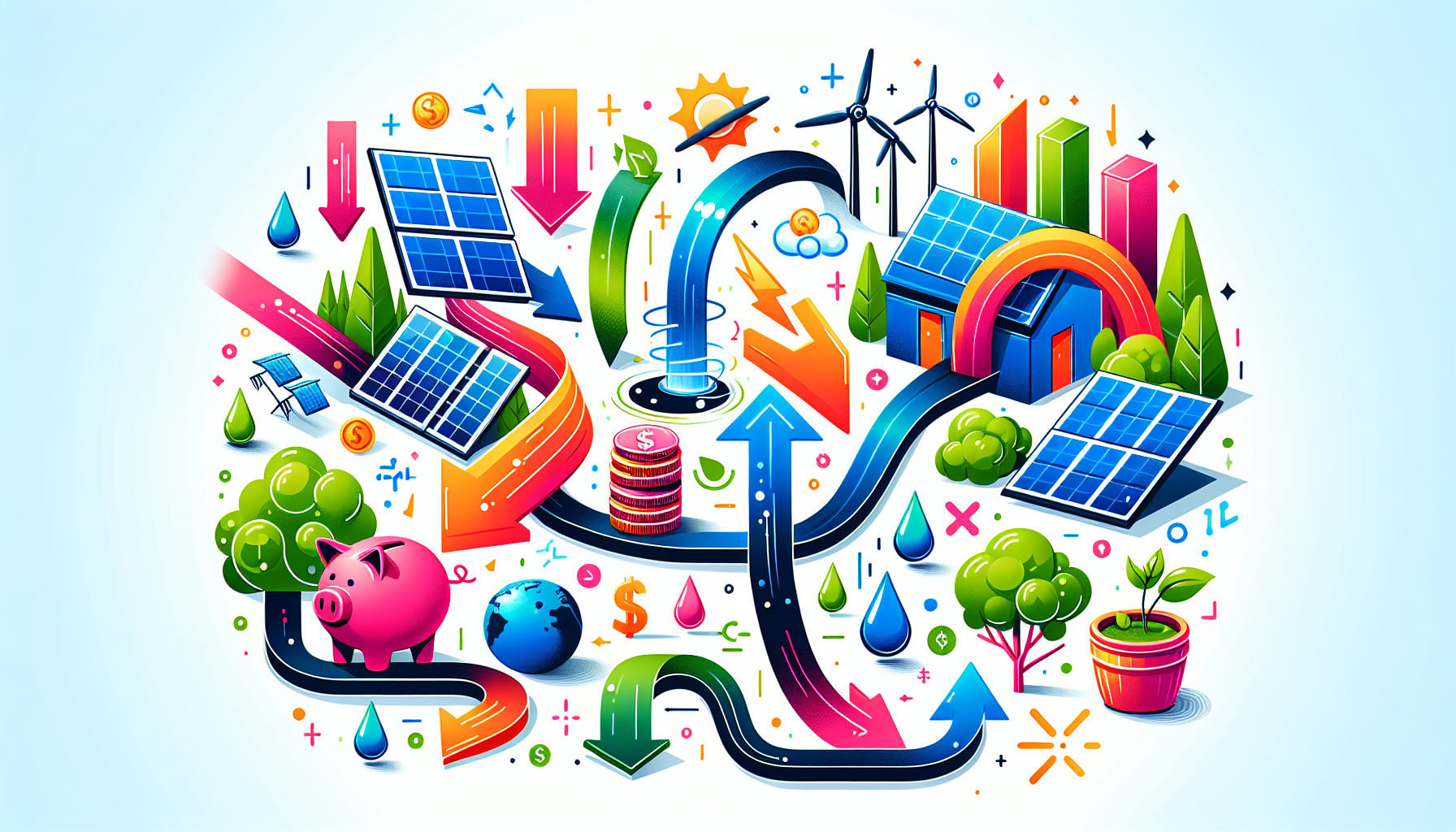
Going off-grid offers numerous benefits that appeal to a wide range of homeowners. First and foremost, off-grid solar systems eliminate monthly electric bills, leading to significant long-term cost savings despite the initial investment.
Additionally, these systems provide energy autonomy, allowing homeowners to live independently from utility companies and reduce their vulnerability to power outages and utility price hikes.
Moreover, off-grid solar systems offer environmental benefits by reducing reliance on traditional power sources and lowering carbon footprints. By using renewable energy, homeowners can contribute to the reduction of greenhouse gas emissions and promote sustainable living.
The next sections will explore specific advantages such as energy independence, environmental impact, and cost savings.
Energy Independence
Energy independence through an off-grid solar system allows individuals to live without relying on electric utility companies. This autonomy provides complete control over one’s energy source, reducing vulnerability to utility price hikes and outages. For those who disagree with utility practices or seek sustainable energy, off-grid living offers the freedom to generate and manage their own power.
Off-grid solar systems also facilitate energy independence in mobile applications, such as RVs and boats. These systems enable users to generate their own power while traveling, enhancing their mobility and reducing dependence on campsites or marinas for electricity. This independence is particularly appealing to adventurers and those seeking a nomadic lifestyle.
Environmental Impact
Utilizing off-grid solar energy contributes to the reduction of greenhouse gas emissions. Off-grid solar systems help mitigate the environmental impact by reducing reliance on fossil fuels.
For RVs and boats, solar power systems offer eco-friendly travel options, supporting efficient energy solutions for extended adventures without harming the environment.
Cost Savings
Investing in an off-grid solar system can lead to substantial cost savings over time. Homeowners may benefit from a 30% federal tax credit for installing these systems, making them more cost-effective. Additionally, the elimination of monthly electric bills and the reduction of energy expenses contribute to long-term financial savings.
Overall cost benefits make off-grid solar systems an attractive option despite the initial investment.
Choosing the Right Off-Grid Solar System
Choosing the right off-grid solar system involves assessing your specific energy needs, considering your location, and planning your budget. Off-grid living is optimal for small homes in rural areas where the grid is unreliable or non-existent. Homes with low electricity consumption or those located in remote areas are best suited for off-grid setups.
When selecting an off-grid solar system, it’s essential to evaluate your electricity usage, budget range, and local sunlight availability. These factors will help determine the size and type of system required to meet your energy needs effectively.
The next sections will provide detailed insights into assessing energy needs, location considerations, and budget planning.
Assessing Energy Needs
To determine the size of your solar panel system, you need to assess your daily electricity consumption. An American household consumes an average of 30 kWh of electricity each day. This figure represents the typical daily energy usage for such homes. You can estimate your electricity load by using your electric bill or the wattage of your appliances.
Dividing the total electricity required by the number of expected sun hours will give you an idea of how many solar panels you need to meet your energy demands.
Location Considerations
Choosing an appropriate location maximizes energy production for your off-grid solar system. Locations with varying sunlight exposure may require adjustments in solar array size and energy storage capacity to meet energy demands.
Deep-cycle batteries are recommended for off-grid solar systems due to their ability to handle partial discharge and provide reliable energy storage.
Budget Planning
The overall costs for an off-grid solar system can range between $10,000 and $50,000 depending on the system size and component choices. Doing the work yourself can save money, but it requires careful planning and organization to ensure a successful outcome.
Proper budget planning helps balance initial costs with long-term savings and benefits.
Installation Process
The installation process of an off-grid solar system requires careful planning and execution to ensure safety and efficiency. This process involves several key stages, including site assessment, component installation, and system testing. Each stage plays a critical role in ensuring the overall success and reliability of the system.
Proper installation maximizes energy production and extends the components’ lifespan. The next sections will provide a detailed look at each stage of the installation process, from site assessment to system testing.
Site Assessment
A thorough site assessment determines the optimal placement of solar panels to maximize sunlight exposure. This involves evaluating sun exposure to identify the best locations for installation and conducting a shadow analysis to spot potential obstructions that could reduce panel effectiveness.
Additionally, a thorough roof inspection ensures the structure can support the weight and installation of solar panels.
Component Installation
The installation of solar components is a critical step in setting up an off-grid solar system. Solar panels need to be mounted in a way that avoids obstructions and ensures they are tilted towards the sun for maximum efficiency.
Specialized kits, such as a grid solar kit, can significantly streamline the installation process, saving time and effort. For example, EcoFlow Power Kits can reduce installation time significantly, making the process up to five times faster compared to typical systems.
A common approach to managing off-grid solar project installations is through DIY methods with support from friends or skilled individuals. Holding ‘work parties’ where friends help with the installation in exchange for food and drinks is a fun and effective way to gather the necessary manpower.
Using high-quality wiring and connectors minimizes energy loss and ensures the system’s longevity.
System Testing
Testing is a crucial phase to ensure that the solar system is properly configured and operational. This involves checking the functionality of each component separately before integrating them. Regular performance monitoring helps identify issues early and maintain optimal operation.
Troubleshooting is an essential part of this process, allowing for adjustments and ensuring that the system works efficiently.
Sun Source Energy’s Off Grid Solutions

Sun Source Energy, based in Las Vegas, Nevada, provides a range of off-grid solar solutions tailored to meet diverse customer needs. Their expertise in designing and installing off-grid systems makes them a reliable partner for transitioning to off-grid living. Sun Source Energy offers comprehensive solutions that include installation, maintenance, and consultation services.
Whether you’re looking for a pre-configured system package or a custom installation tailored to your specific energy needs, Sun Source Energy has you covered. The next sections will explore the various packages and services they offer, ensuring you find the right solution for your off-grid solar needs.
Off Grid System Packages
Sun Source Energy offers a variety of pre-configured off-grid solar system packages designed for easy installation. These packages include all the necessary components, such as solar panels, inverters, charge controllers, and batteries, ensuring a seamless setup process.
Whether you need a basic system for a small cabin or a robust solution for a larger home, these packages cater to various energy needs and budgets.
Custom Installations
For those with unique energy needs or specific site conditions, Sun Source Energy provides personalized off-grid solar installations tailored to meet individual requirements. Their custom solutions take into account factors such as energy consumption patterns, site orientation, and local weather conditions to optimize system performance.
This approach ensures each installation is perfectly suited to the customer’s needs and environment.
Support and Maintenance
Sun Source Energy offers ongoing support and maintenance services to ensure the efficient operation of off-grid solar systems post-installation. These services include regular system checks, performance monitoring, and troubleshooting to address any issues that may arise. Continuous support from Sun Source Energy ensures their customers’ solar systems remain reliable and efficient over the long term.
In addition to maintenance, Sun Source Energy’s support services help customers manage their solar energy efficiently, ensuring peak performance. This support maximizes the lifespan and effectiveness of the installed systems, providing peace of mind and sustained energy independence.
Real-Life Applications
Off-grid solar systems are versatile and can be applied in various real-life scenarios. These systems provide reliable and sustainable energy solutions for residential homes, remote cabins, and mobile applications like RVs and boats. Grid tied solar systems can also complement these off-grid solutions.
The rise of off-grid living is evident in countries like India, where over a million households have adopted renewable energy solutions. This section will explore how off-grid solar systems are being used in different settings.
Residential Homes
Residential homes are increasingly turning to off-grid solar systems to achieve energy independence and reduce reliance on utility grids. The Auerbach family, for example, exemplifies sustainable living through their off-grid home on Lasqueti Island, Canada, relying primarily on solar power.
These systems provide households with autonomy over their energy source, ensuring a reliable power supply and reducing monthly electric bills.
Remote Cabins
Homes in remote locations benefit significantly from off-grid solar systems, especially when their energy demands for heating and cooling are minimal. These systems are ideal for cabins that have lower energy needs and limited electrical systems.
Living off-grid in remote cabins requires careful energy management and conservation, but it offers the peace and independence of living away from the grid.
RVs and Boats
Off-grid solar systems are increasingly popular in mobile applications like RVs and boats due to their compatibility with battery storage and energy needs. These systems provide a reliable energy source for essential devices, ensuring comfort and convenience while traveling.
Limited roof space and the weight of system components make careful planning and sizing crucial for these applications.
Summary
In summary, installing an off-grid solar system offers numerous benefits, including energy independence, environmental sustainability, and cost savings. By understanding the key components and the installation process, homeowners can effectively transition to off-grid living and enjoy the peace of mind that comes with being self-reliant.
Sun Source Energy’s comprehensive solutions and ongoing support make the transition smoother and more accessible.
As you embark on the journey towards energy independence, remember that the initial investment in an off-grid solar system pays off in the long run. Not only will you save on utility bills, but you’ll also contribute to a greener and more sustainable future. Embrace the power of the sun and take control of your energy destiny today.
Frequently Asked Questions
What is an off-grid solar system?
An off-grid solar system is a self-contained energy setup that harnesses solar power, functioning autonomously without relying on the utility grid. This system provides energy independence and reduces dependence on external power sources.
How many solar panels do I need for an off-grid solar system?
You will need to calculate your energy consumption and assess local sunlight availability to determine the number of solar panels required. Generally, each 60-cell panel produces between 300 to 375 watts, so adjust based on your specific energy needs.
What are the benefits of going off-grid?
Going off-grid provides energy independence, promotes environmental sustainability, and leads to significant cost savings by eliminating monthly electric bills and reducing reliance on traditional power sources. Embracing this lifestyle can empower you to control your energy usage while benefiting the planet.
How much does it cost to install an off-grid solar system?
Installing an off-grid solar system generally costs between $10,000 and $50,000, depending on the size and components selected. It’s essential to assess your energy needs and budget carefully.
Can I install an off-grid solar system myself?
Yes, you can install an off-grid solar system yourself, which can save money, but it requires careful planning and installation expertise to ensure effectiveness and safety.


